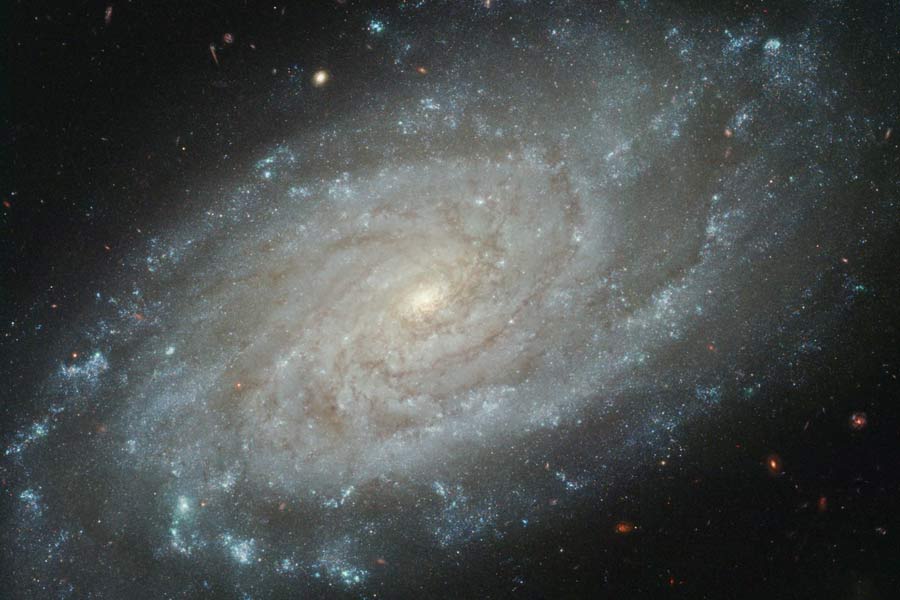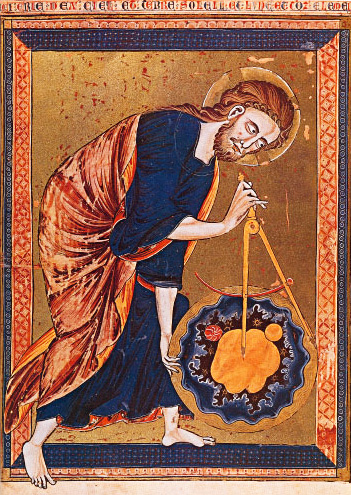Reverence for the Heavens: How Astronomy and Religion Intersect

This article is Part One of Two in a series on the connection between the cosmos and spirituality. Check back at SPACE.com Friday (Jan. 21) for the series conclusion.
Our sun is just one small point of light in the swirl of suns that shape the disk of the Milky Way.
The galaxy's hundreds of billions of stars are strewn so widely apart, it would take a spaceship traveling at the speed of light one hundred thousand years to travel the distance. The starry wheel of the galaxy turns around a massive black hole, a point of infinite density with gravity so complete that not even light can escape.
The structure and scale of our galaxy is astonishing. But ours is just one among hundreds of billions of galaxies in the universe.
Little wonder, then, that the contemplation of the cosmos can evoke the same emotions as religious awe and reverence. According to Father Paul Pavel Gabor, an astronomer for the Vatican Observatory, this is not always a positive experience. Just as some may experience fear and trembling when contemplating God and Heaven, there are those who become similarly overwhelmed when confronted with the astronomical proportions of the heavens.
"They find it quite awe-inspiring, but in the wrong way," Gabor notes. "When I show people pictures of the local cluster of galaxies, just to give them a sense of the scale of things, the reaction quite often is, "Oh dear. I'm completely insignificant, and I'm uncomfortable about this whole universe thing."
In Gabor's view, one way to counter this despair is to have faith in a higher power, to believe in a God that created the universe as a gesture of love.
Get the Space.com Newsletter
Breaking space news, the latest updates on rocket launches, skywatching events and more!
"Faith tells you that the universe is not something to intimidate you, but it is something given to you as a gift, by somebody who wants to give you something nice, something pretty," he says. "So looking at those astronomy pictures, you can either feel that the glass is half full, and believe that you're really being given something here, or you can feel the glass is half empty and this is just frightening and you want to hide in your little rabbit hole somewhere."
Whether you are terrified or thrilled by the grandeur of the universe, there is no disputing its elemental nature: it is the source of us all. As Carl Sagan once said, "We are made of star stuff." The chemical elements that shape the breadth of creation also form our galaxy, our planet and even the cells of our bodies. Exploring the cosmos therefore is one way to get close to a "grand creator." This notion is reflected in the final lines of John Gillespie Magee Jr.'s poem "High Flight," which President Reagan read at the memorial service for the astronauts killed in the 1986 Challenger space shuttle tragedy:
with silent, lifting mind I've trod
The high untrespassed sanctity of space,
Put out my hand, and touched the face of God.
The Great Architect

The term "cosmos" means "ordered world." For most of recorded history, humans have believed that God created the ordered universe out of chaos. This belief is still shared by a majority of people around the world today, but aspects of that faith have changed as our scientific knowledge of the cosmos has grown. For instance, Gabor's colleague, Vatican astronomer Brother Guy Consolmagno, says that while many people believe God created the universe, they think its very enormity makes it impossible for God to take any personal note of us. This mote of dust we call planet Earth is insignificantly tiny in comparison to the smallest of stars, and each of our lives lasts for the briefest of cosmic moments.
"Some people will refuse to believe because they still haven't grasped what kind of God we're talking about, a God that is so "other" that it is possible," says Consolmagno.
This philosophical notion of a God for whom all things are possible, and who is beyond our basic human capacity of understanding, finds an echo in the still mysterious nature of the universe. For instance, most of the universe is currently attributed to the obscure categories "dark energy" and "dark matter." Writing in Scientific American, the astrophysicist David Cline noted those terms are really just expressions of our ignorance.
Another area of scientific ignorance is the time before the Big Bang. What, if anything, happened before the universe began its current outward expansion? The Roman Catholic priest Georges Lemaître originally proposed the idea that the universe expanded from an initial point (which he called 'the primeval atom'), and the Catholic Church supported the Big Bang theory even before most cosmologists did. This "day without yesterday" was seen as being consistent with the creation ex nihilo (out of nothing) as described in the Book of Genesis.
According to a recent Reuter's news report, Pope Benedict XVI saidthat "God's mind was behind complex scientific theories such as the Big Bang." The Pope did not cite the Big Bang specifically, but spoke more generally about the creation of the universe:
"The universe is not the result of chance, as some would like to believe. In contemplating it, we are invited to read for ourselves something quite profound: the wisdom of the Creator, the inexhaustible imagination of God, his infinite love for us. We should not let ourselves be limited by the concept of theories that only arrive at a certain point and which -- if you look closely -- are not set up as rivals of faith, but don't manage to explain the ultimate sense of reality. In the beauty of the world, in its mystery, in its grandness and in its rationality how can we not read the eternal rationality, and how can we do nothing less than to be taken by hand as it leads us to the ultimate unique God, creator of heaven and earth."
In another talk given at a different time, Pope Benedict said that one way to gain a better understanding of the universe is through mathematics:
"[Galileo] was convinced that God has given us two books, the book of Sacred Scripture and the book of Nature. And the language of Nature -- this was his conviction -- was mathematics, so it is the language of God, a language of the Creator. The surprising thing is that this invention of our human intellect is truly key to understanding Nature, that Nature is truly structured in a mathematical way, and that our mathematics, invented by our human mind, is truly the instrument for working with Nature, to put it at our service, to use it through technology."
Consolmagno says that some wonder whether mathematics was invented by man to describe Nature, or whether we discovered the mathematical properties that were built into Nature by a higher power.
"Maybe it's a little bit of both," he says. "The thing that always astonishes me, beyond the fact that the universe is mathematical, the universe makes sense. The mathematics is beautiful. When a student grasps what Maxwell's equations tell them, there's this leap of joy that's as great as looking at the sunset that Maxwell's equations can explain. Why it should work at all is something no philosopher has been able to figure out."
In Part Two of this article (appearing Friday, Jan. 21), the Vatican astronomers contend that many of the historical stories of the Church persecuting people for their scientific beliefs are inaccurate.
Join our Space Forums to keep talking space on the latest missions, night sky and more! And if you have a news tip, correction or comment, let us know at: community@space.com.
Leslie Mullen is an award-winning science photojournalist who has produced TV, radio, podcasts, live stage shows, and web features. Her work has been featured by NASA, PBS, National Geographic Channel, and other media outlets. Recently, Leslie has worked as writer, producer and host of the NASA/JPL podcast, "On a Mission," which was part of JPL's 2019 Emmy Award for "Outstanding Original Interactive Program." The podcast was awarded the gold medal for best technology podcast at the 2019 New York Festivals Radio Awards, and was a 2019 Webby Award honoree for best science and education podcast.










